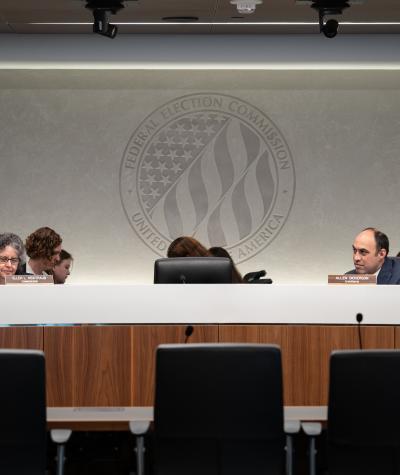Voters have a right to know who is spending money to influence their vote and affect the outcome of elections, which is why federal campaign finance laws require disclaimers on election ads.
Disclaimers — the “paid for by” statement written or spoken at the end of most political ads — are one of the most important transparency-promoting tools for voters, who need to be able to evaluate the credibility of the electoral messages they see and hear every election season.
For years, however, federal disclaimer regulations have badly needed updating to keep pace with modern media technology. A disclaimer could be the only way a voter learns who paid for a communication, yet many electoral messages might not feature one, purely because they are shown on an Internet-based app or platform.
This is particularly problematic because, as a recent media analysis report indicates, more Americans now routinely watch media content over streaming services than via a broadcast, cable, or satellite network, and both candidates and political ad-makers have adapted their voter-outreach strategies accordingly.
A regulatory framework that fails to even acknowledge the existence of such technologies cannot hope to provide the transparency needed for voters to meaningfully participate in elections.
Federal regulations have long required disclaimers on election ads that appear in print or are aired through a broadcast, cable, or satellite network. But with no clear mention of most forms of internet advertising in those regulations, the Federal Election Commission (FEC), the federal agency responsible for implementing and enforcing campaign finance laws, has taken a case-by-case approach – often muddled with internal disagreement – about whether certain digital ad formats require a detailed disclaimer or any disclaimer at all.
The FEC began a rulemaking in 2011 to update its disclaimer regulations to address these gaps, and after more than a decade of delays and inaction, the agency finally took action to revise its regulations to more directly address disclaimers on digital and online communications.
Unfortunately, while the agency’s belated adoption of new regulations regarding digital political ad disclaimers is a significant development, circumstances surrounding the regulations’ adoption and explanation leave both questions and concerns.
For starters, the FEC’s eleventh-hour, unexplained proposal of an alternative version of the draft final rule introduced ambiguity and apparent regulatory gaps that could be exploited down the road. Compounding those issues, two Commissioners who voted to approve the new rule immediately issued an “Interpretative Statement” that raises questions about whether they will consistently interpret and enforce the new requirements, which will be the true test of their effectiveness.
For ads on the internet, FEC regulations previously required disclaimers only on “communications placed for a fee on another person’s Web site.” That regulatory language, grounded in a Netscape-era understanding of how the internet works, left unanswered questions about whether disclaimers were required for ads on contemporary media channels like mobile apps, streaming services, and social media platforms.
Moreover, FEC regulations carved out exceptions for “small items” and situations where a disclaimer would be “impracticable,” which the Commission applied to certain small, space or character-limited ad formats. The application of these exceptions to digital ads, when they were meant for items like pens and skywriting, has been a source of internal debate at the Commission and left voters without key information.
Over the past decade, CLC has repeatedly urged the FEC to update its outdated internet disclaimer rules to meaningfully address contemporary digital communications and embrace a flexible framework that would apply to future technologies as they emerge.
The initial draft final rule, published in early November 2022, covered a broad range of media channels routinely used to disseminate electoral communications, and was poised to significantly improve transparency in our elections, providing better protections of voters’ right to know who is paying to influence their vote.
Yet just three days before the final rule was to be discussed and voted on, the FEC released an alternative version, with no indication of how it differed from the draft published weeks earlier and no explanation for the alternative draft’s changes.
As explained in CLC’s public comment, a close examination of the alternative draft revealed its omission of two key terms, which raises serious questions about the intended scope of the rule.
Specifically, whereas the initial draft made clear that disclaimers would be required on all communications “placed or promoted for a fee” on any “website, digital device, application, service, or advertising platform,” the alternative draft omits the terms “promoted” and “service.”
With barely any discussion of these last-minute revisions, the Commission voted 5-0 to approve the alternative, stripped-down draft of the disclaimer rule. And just hours later, two Commissioners who voted to approve the rule issued an “Interpretative Statement” clarifying, among other things, their intention not to apply the new disclaimer rule when doing so would be “too burdensome.”
The full implications of the new rule and how Commissioners will apply and enforce it remain unclear, but there are already reasons to be concerned about whether the new rule will usher in the digital ad transparency it supposedly promises.
For now, we can only wait and see with guarded optimism.

